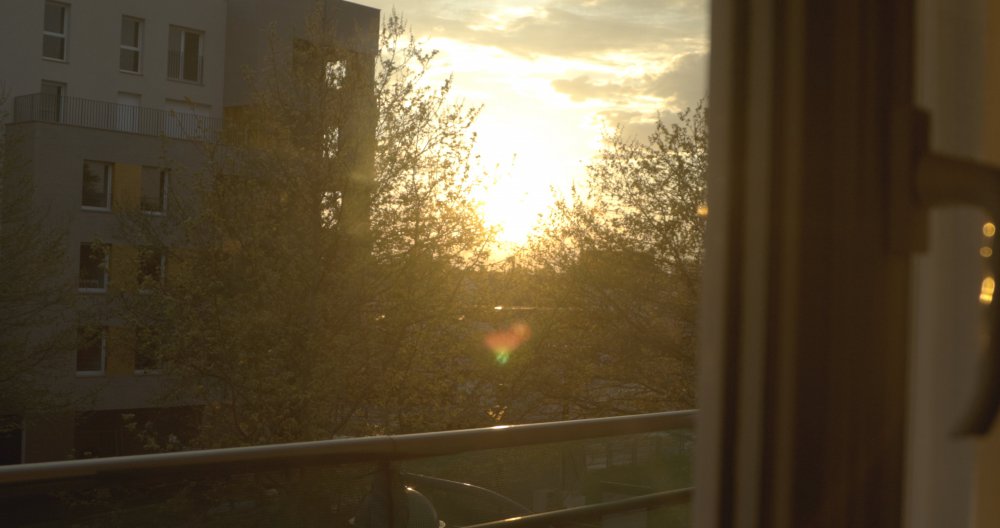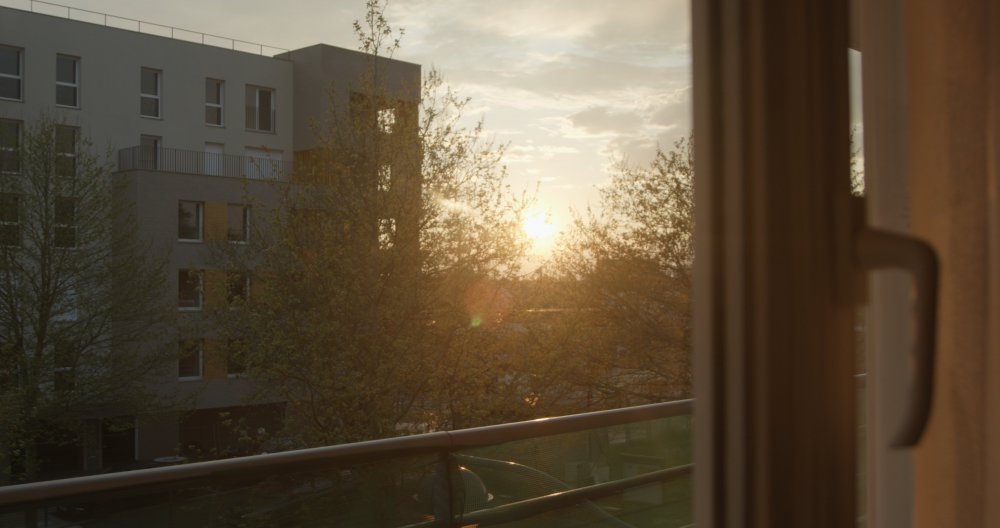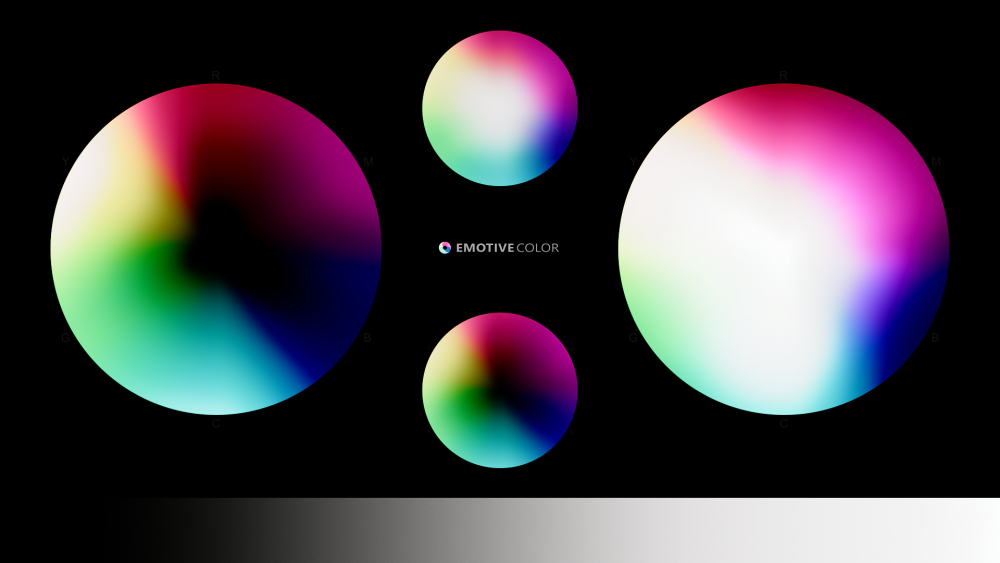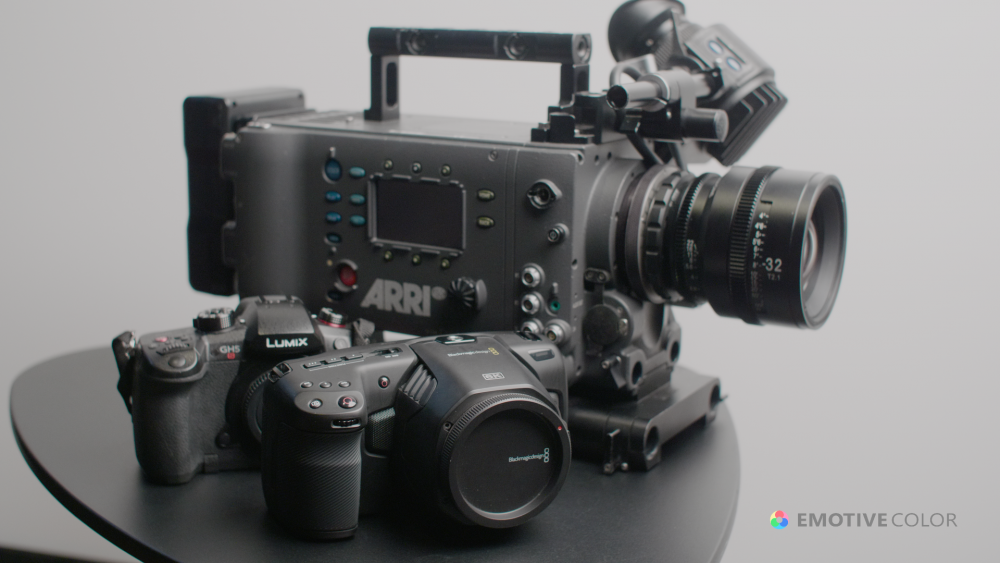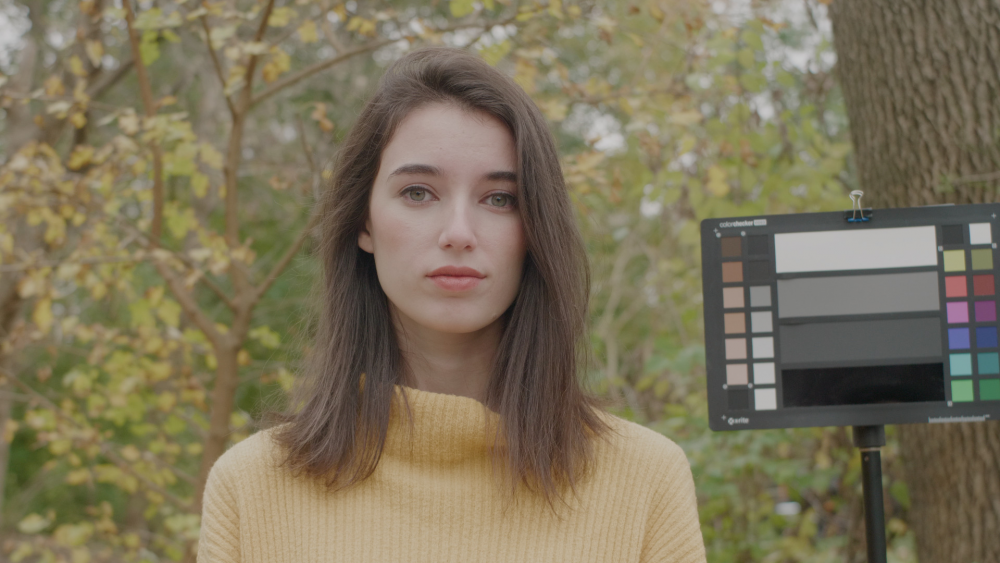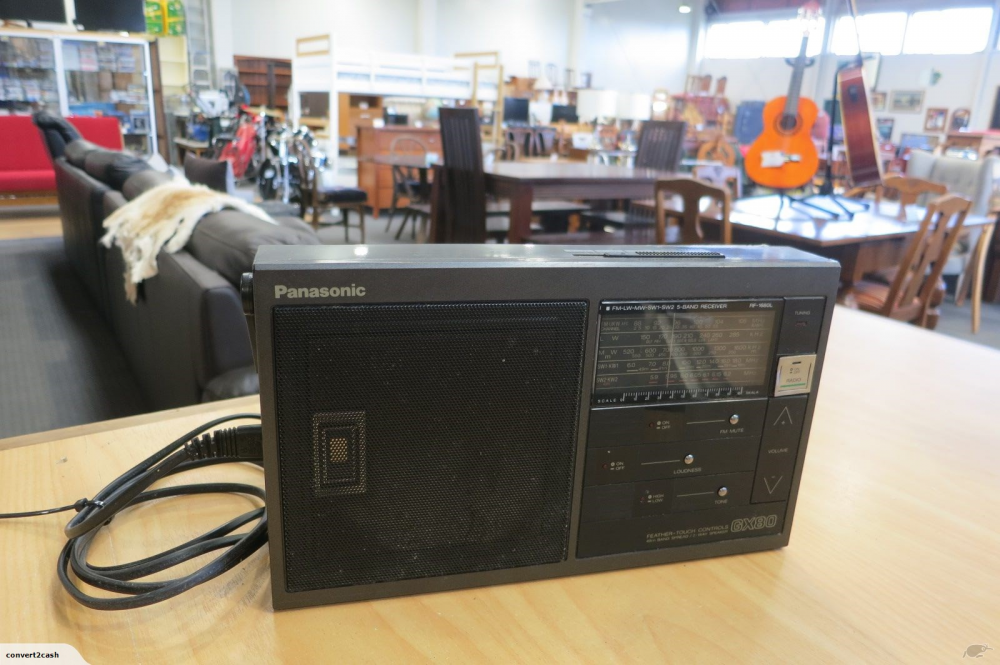Leaderboard
Popular Content
Showing content with the highest reputation on 04/18/2020 in all areas
-

Has Canon planned a Formidable Attack
Mako Sports and 3 others reacted to Andrew Reid for a topic
It's $16,000! S1H arguably has the same image for $4k.4 points -

Step Back
kye and 2 others reacted to fuzzynormal for a topic
Just decided to sell most of my camera gear. Figured better do it now in case the economy goes tits up in a few months. Also, it just felt like my current equipment was overkill for my projects. Anyone else getting a tinge of ‘anti-g.a.s. With everything that’s going on? My last 4 gigs were basically shot 30fps 4K with a single prime, and when looking at my lens/camera shelf it seemed like it was time for my unused stuff to get back into the world. Plus, the sales will help me pay some credit card bills. Full disclosure: while the GH5 and G85 made an exit, a refurbished Em10iii popped up on eBay for less than $300. So, while it’s certainly downgrading, gear acquisition is still going on...3 points -

Short video of Miami under Coronavirus
Kubrickian and one other reacted to OliKMIA for a topic
Here is my shot at this Gears: GH5 for the video Canon 6D for the timelapse Mavic Air and Mavic 2 Zoom for the aerial shots. The audio was entirely designed by my friends at https://www.boxoftoysaudio.com/ They are based in UK if you need audio music composition and SFX. Great pros. I hope everyone here is safe and stay that way. Cheers.2 points -
Yeah, I have a good collection of cameras and lenses but I always feel the urge to buy something more. Then I ask myself the following questions: Do I really need this, what value is this new piece of equipment going to bring? Can't my current gear perform most of the job already? Is this new piece of gear radically change my production speed and capacity? Look at all the stuff you bought in the past and barely use now, is there a chance this new acquisition will end-up taking dust like the other one? Most of the time, I realize that I don't really need the new fantasized gear. Just think about it for a few days before making an impulsive purchase. For instance, my main cameras for timelapse are the Canon 6D (I got 3 of them) and I always hate the poor DR of this camera. I want to upgrade or switch to another brand. But then I realize that it would be costly and most importantly, I don't remember any project were DR was a major limiting factor for my creative vision or the customer need... Also, 90% of the time my issue doesn't come from gear but from external factors, procrastination being a bit one! I'm currently producing a documentary and gear is the least of my concern. You can shoot great stuff with any mid-range stuff nowadays. I also use 20% of my gears 80% of the time. But sometime, the less used one are absolutely key to finish a project. If anything, my next big spending will be my desktop workstation. It need a refresh and I eventually spend much more time behind my computer doing editing than behind a camera.2 points
-

Has Canon planned a Formidable Attack
IronFilm and one other reacted to Trankilstef for a topic
Obviously Canon made improvements, they couldn't be as bad as they were. Just look at this quick test I made between my two camera bodies (Canon EOS R and Panasonic S1H). Same settings (except I had to put iso 400 on eos r and iso 640 in S1h as I was shooting Log and compensate with aperture), same scene, 30 seconds apart. Guess wich is wich. Easy to spot the bad highlights handling right? 😅 So much room in the highlights with the S1H compared to the Canon EOS R !! I really hope the R5 (or R6) would do better than this cause I'm very interested in it. DR will be the main selling point for me as I know the AF, the colors, the handling would be great. I just want improved DR and maybe I'd consider it over my S1H for video, to complement my EOS R wich serves me so well for stills.2 points -
If you're shooting a wedding / musical performance / corporate event, it is nice to put down a couple of mirrorless cameras (such as any Panasonic GHx) as locked off mid or wide shots. So long as their battery & SD cards lasts, and it doesn't overheat, then that is perfect for extra coverage! And having it being a more expensive camcorder is just a waste. And for interviews, if you're just one or two person crew then it is quite a distraction from the subject at hand to need to constantly check if you're about to hit the limit. Additionally, even if you're say a four person crew, who on earth wants to interrupt an interview to re-start the roll right at a crucial moment?2 points
-
How much bit depth? (10-bit / 12-bit / 14-bit)
heart0less and one other reacted to Volumetrik for a topic
I know this is an old topic, but I wanted to see for myself the differences that full frame MLV raw video bit-rate does on the 5D2 so here is a quick test I did. First the variables : Canon 5D Mark II 2.1.2 w/94k actuations Canon 35mm F/2 IS @ F/7 VAF 5D2 AA Filter SanDisk ExtremePro 32Gb UDMA 7 160MB/s CF card magiclantern-crop_rec-3k_Updated_Center_4.20pm-5D2-eXperimental.2019Nov14.5D2212 from Reddeercity 100 ISO 1866 x 1044 1.00x Crop @ 23.976 fps 1/50s I shot the same scene with both highlights and shadows clipping so we can have a good sense of dynamic range. Using the ML spot-meter, the sky is 100%, the wall in-between the two windows is 55% and the towel is 1%. Here is an example of the ACR settings I used. I only changed two things : Highlights and Shadows First test : ACR settings : -100 Highlights & +100 Shadows : This is an extreme test, you can see banding so this is not usable footage, but a good example. Second test : ACR settings : -70 Highlights & +70 Shadows : This is the highest shadows I could push before seeing banding, so I would consider this the limit of usable footage. You can click on the images to view in full resolution. Areas to look at are the electric baseboard as it shoes the color shifting very clearly. Towel shoes the banding and the wall in between the two windows shows the effects on middle exposure (55%). Conclusion : I found that the cleanest was the 14-Bit (not surprising) compared to the two others. However, this is not a continuous setting on the 5D2 as it starts skipping frames around 24-26 seconds. The 12-Bit sounds like a good compromise as I can pretty much get it continuous with sound. It does have a very slight color shift towards green in the -100+100 test and a bit more banding visible on the towel, but in the -70+70 it looks (to my eye) 99% the same as the 14-Bit. The 10-bit is the worst of the bunch (again, not surprising) but I was very surprised at the green color shifting in the shadows. It was much more visible than I anticipated. Finally, the banding is less severe in the towel, but the green noise takes over that whole area anyways. Overall, the highlight retention of all the bit depths seem to be roughly equal, as I cannot see a difference between them. Conclusion of the conclusion : I will be using the 12-bit for 95% of shooting scenarios, especially ones where I need longer takes than 24-26 seconds. I'll use 14-Bit if I am in a low-light situation where I know I will need to pull up exposure and shadows. Finally, I'll never touch 10-bit as the color shifting is too severe for my taste. Hope you found my tests useful !2 points -

GH5 to Alexa Conversion
TrueIndigo and one other reacted to Sage for a topic
Thanks guys, it was the hardest news of my life. Fortunately, he's doing well, with almost no side effects despite two cycles of Folfirinox. Its a marathon, but an encouraging start2 points -
The V4 email should be out to everyone; if you haven't received it please let me know. A month ago, my father was diagnosed with advanced colon cancer at the same time that the virus situation was taking off, and life was thrown into disarray. March is colon cancer awareness month, and we are aware now (get screened every 10 years, starting at 50) The GH5S is, at last, supported. V4: Emotive Color Component ('EC709') - Remade in 'HDR', preserving intense values (exceeding 0.0-1.0), that are incorporated into final Rec709 envelope - Using the new engine, Arri Rec709 primaries are recreated at lower saturation, while 'projecting' this primary behavior to HDR gamut extents (beyond Arri Rec709 gamut clipping) - Raised highlight ceiling for Main (average between Soft and Linear) - Significantly refined saturation envelope for Main and Linear (& Soft, to a lesser extent) Core LogC - Remade with new engine (Incorporates initial baseline HSL conform) - Fixed chart scan error that added 1/18th incorrect neighboring sample value to each sample average (hidden mistake in my very earliest code) (Corrects for persistent slight inaccuracies despite multipass, such as magenta bias of shadow skin tone in Tungsten) - Fully linearized highlight rolloff (true to LogC) with maximal detail retention (effective highlight DR increase) - New smoothing algorithm (incorporated into engine) - 12 passes, combining two hue-aware algorithms for new smoothness standard while preserving hue lines - Most extreme gamut is now directly measured and preserved (i.e. colored Leds in night environments) Misc. - Added Exposure Compensation [PRE]s - actual exposure color conversions for use ahead of the conversion (interpolated from sample data, incorporating rolloff) - Added Auto Black Level POSTs - for use following the conversion; quickly conform black level in any NLE (No accompanying relative hue/saturation distortion whatsoever, unlike standard luma tools) - Remade all PREs with new engine, taking new NLE measurements to accommodate NLE profile rendition shifts since original release - Direct monitoring variations included for HLG and Cine-D, and VLog external monitoring variation (includes levels fix) - Rewrite of Pdf (for Gen.4) - Direct FCPX support added (with distinct PREs and Pdf) - Significantly more efficient file sizes - 16 bit Gradient Chart included to test smoothness of theoretical & far gamut, and reveal pipeline banding issues - Each file is now unique to its owner at coordinate level2 points
-

Has Canon planned a Formidable Attack
zerocool22 reacted to sanveer for a topic
The guys at Cinema5d tested the new Full Frame Canon C500 Mark ii, and ranked it for the highest dynamic range for any camera they've tested (at 13.1 Stops), apart from the Arri. https://***URL not allowed***/canon-c500-markii-lab-test-dynamic-range-latitude-rolling-shutter/ They've obviously not rested any of the REDs and many other cameras, and I also suspect that the Arri would have scored a hair under 14stops, but they didn't have the guts to release the score, fearing backlash. Also, people have been mocking their dynamic range tests, like everyone else (including that former BBC affiliated gentlemen who scored the GH5s at 14.7 stops). The S1H has the same sensor as the S1, which has a dynamic range of 14.5 stops in Stills mode (according to DXO mark, though not sure at what exact signal to noise ratio). Cinema5d calculated its dynamic range to be 12.7 stops for Video (different mode than stills, since it's for video, and 10-bit instead of 12-bit). So, if the Canon C500 Mark ii was a stills camera, in still mode, one could probably add another 1.8 stops (+/-), to get about 14.9 stops or so. Which means, that Canon seems to have caught up with Sony's Image Sensors and maybe even surpassed them (the C500 Markii also has Class Leading Rolling Shutter for a Full Frame sensor). Also, the ability to pull up an image from almost 5 stops of underexposure, is also probably class leading for a camera at that price point (and maybe many above). This probably means that the Canon R5 and other R Series cameras are also going to be extremely competitive for video as well as for stills. For the longest we've been ranting about Canon not having enough dynamic range, for stills or video, but I am guessing it's not just caught up with Sony, it's probably even beating it in many aspects. If Canon can price their R Series reasonably, and not do the old Canon trick of disabling features, it could pose a serious threat to Sony and everyone else around.1 point -

A walk through the Forest - Lumix G7 + Sigma 8-16mm
leslie reacted to Mr. Freeze for a topic
Today, I took my Panasonic G7 with me, while walking through a forest nearby. Recorded in UHD 25p, CinelikeV I used a Viltrox Focal Reducer to connect my Sigma 8-16mm to the MFT-Mount of the G7. This combination deliveres a really wide field of view, obviously. Grading was done in resolve, a warm, kinda natural look.1 point -
Has Canon planned a Formidable Attack
Trankilstef reacted to Video Hummus for a topic
My post was tongue and cheek about not being able to see a DR difference on screens.1 point -

Has Canon planned a Formidable Attack
Emanuel reacted to Trankilstef for a topic
Of course it's easy to spot the difference. My post aimed at demonstrating how big of a difference there is between the Canon eos R and Panasonic S1H sensors. Canon really need to up its game regarding sensors and dynamic range.1 point -
How much bit depth? (10-bit / 12-bit / 14-bit)
heart0less reacted to Volumetrik for a topic
Thank you ! I love this camera. Ok so following feedback I got from the magic lantern forum, I did another test. This time, I am testing the highlight detail retention capabilities of different bit depths. First the variables : Canon 5D Mark II 2.1.2 w/94k actuations Canon 35mm F/2 IS VAF 5D2 AA Filter SanDisk ExtremePro 32Gb UDMA 7 160MB/s CF card magiclantern-crop_rec-3k_Updated_Center_4.20pm-5D2-eXperimental.2019Nov14.5D2212 from Reddeercity 100 ISO 1866 x 1044 1.00x Crop @ 23.976 fps 1/50s Methodology : I started with a very over-exposed sky and brought down the exposure by 1/3 ev using the aperture. Test starts at f/6.4 and using the raw zebras as mentioned in the thread. I then pulled back two settings in ACR, exposure and Highlights. Exposure is brought down relatively to the aperture setting so that the resulting image is the same exposure across the board. Highlights are always pulled back @ -100. I did two rounds, first at 10-bit and the second at 14-bit. Something that I encountered however during the recording is that the RAW zebras did not show while recording 10-bit footage. They were displaying fine while looking at live-view without recording, but as soon as I started recording, the zebras turned standard. Here is what I am talking about. First image is while recording 14-bit, second while recording 10-bit. Here is a reference picture of the scene I made with my iPhone 7 Plus : Onto the test itself. Here is the 14-bit : And here is the 10-bit : Don't forget that you can click on these images to view in full resolution. Can you tell the difference ? 😛 Here are all my files from the test, DNG's, xmp profiles created in ACR, PSD files, exported JPEGs and everything in between. Conclusion : It seems that both 14-bit and 10-bit depths handle high exposure detail very, very well. Both can be ''metered'' about the same for the highlights. From what I can tell, we lose detail in the clouds at f/6.4 and f/7. We start seeing consistent detail in the clouds at f/8. Coincidentally, f/8 is when the black bars in the RAW zebras don't appear anymore. I would conclude that using zebras for exposing and looking for an exposure just before black bars is a great way of getting all the highlight capacity of the sensor. I had trouble seeing the difference in this scene from 10-bit and 14-bit. In my eye, they both seem equal. I did not test 12-bit because the difference was marginal compared to 14-bit in the first test. The bulk of the difference that I wanted to expose is between the two extremes. This does support my hypothesis in the first test that highlight detail seems unaffected by bit depth. I also took the good exposure picture (f/8) and pushed the shadows to 100%. I looked for areas where I could see differences. Here is another example of the green cast in the shadows when pushed to the extreme (Shadows -100) : You can see what I am talking about in two places : the back of the stop sign and the window frame. In the 10-bit portion (left) you can see some green cast in the recovered shadow areas, but the cast is much less severe than the initial test. There is however much more grain. Its especially visible in the window frame section in the middle. Conclusion of the conclusion : 10-Bit seems AS GOOD AS as 14-Bit for highlight detail retention @ 100 ISO. For shadow detail when pushed up +100, 14-Bit still holds an advantage, albeit less than previously thought.1 point -

Joseph Turns 42 -- short film shot on 35mm film
Emanuel reacted to heart0less for a topic
I liked it. Gave me a really nostalgic feel. The actor's performance is great - he looks confused, a little lost in the present time, while the look of actual film negative and the music bring back the old times. How are those run nowadays?1 point -
Has Canon planned a Formidable Attack
Emanuel reacted to HockeyFan12 for a topic
Highlight detail is so good on the S1H. On the S1, too. That camera is a sleeper. P6K is excellent, too. To me the 2.1Gbps codec on the C500 Mk II would be too heavy to be pragmatic, regardless of image quality.1 point -

Has Canon planned a Formidable Attack
Trankilstef reacted to Emanuel for a topic
Canon, Panasonic. No DR to my guess, CS is. Did it without your help BTW ; -)1 point -

Experiences with IronGlass Russian Cinemodded Lenses?
heart0less reacted to Tito Ferradans for a topic
I'm trying to shoot my tests with the rehoused Helios today so I can put the video up next weekend! Subscribe to the channel if you haven't yet! http://www.youtube.com/tferradans Right on point, my friend.1 point -
1 point
-

Has Canon planned a Formidable Attack
FHDcrew reacted to Andrew Reid for a topic
None of you can appreciate this kind of dynamic range on a normal display. It is going to look horrible. HDR1000 minimum requirement. And I would not but much stock in Cinema5D's testing methodology for dynamic range. The whole dynamic range technique is total bullshit in the real world... underexposing by 5 stops rather than lighting properly or appreciating good natural light. Nobody actually shoots a film this way. You would have a completely unusably dark frame on the monitor. The Canon sensor isn't anything special. Really it isn't. The rolling shutter in 6K is about the same as an old GH4. The resolution is lower than 8K or what RED offers. The sensor size is smaller than the current state of the art larger format cameras like the 4K 10bit GFX 100. The dynamic range is no better than the sensor in a $2000 mirrorless camera. The S1H is $12,000 cheaper and good enough for a top-end Netflix show, in terms of the image. The Fuji GFX 100 has still a very powerful processor and 10bit codec in a much smaller body with great battery life. So forgive me if I don't jump up and down in excitement and rush out to spend $16k on the C500 II for creative reasons.1 point -
Has Canon planned a Formidable Attack
sanveer reacted to Video Hummus for a topic
Lol, I think the cinema5d results are more indicative of real world performance. No way it’s 14.7 I think this is a respectable showing for the relatively compact S1H. Too bad they didn’t have a Internal ND solution for it.1 point -

Fuji X-H2 - They can't decide whether to cancel it... Or?
heart0less reacted to MrSMW for a topic
A 1 inch 4K camcorder is exactly what I use for wedding ceremonies and speeches. It isn’t intended in any way to be ‘cinematic’, rather just do that specific job, so I’m cool with hybrid camera time limits mostly shooting 10 second clips and the occasional 2-3 minute piece such as vows. It’s a cheap option also. Bought it for about 1200 and this should have been it’s 4th season and it’s earned it’s keep to date at least 20x over. So not so bothered about recording times but I can appreciate some are. So if Fuji wish to ‘differentiate’ we need: XH1 type body. XT4 internals and battery. ND and true anamorphic. Interchangeable SSD of at least 500GB. Build it and they will come, field of dreams baby!1 point -
There will be a small glimpse of the current development of that on here in the not too distant future....1 point
-
There is no adapter with image stabilization. You will need a lens with image stabilization such as IS, OS, or VC based on the manufacture. In my opinion, Canons IS system is the smoothest and doesnt 'jerk' the video. As far as speedboosters, i believe metabones autofocus faster but the difference is negligible compared the cheaper viltrox. There are many tips on how to get stable footage handheld. The most important would probably be weighing the camera down with a heavy battery and a adding a cage or a better grip. Neckstraps, tripods, and gimbals are other options. I also believe there are some companies like steadxp(?) using gyroscope technology which is pretty amazing but you are limited in some shooting modes and will add to your post production time. If none of these answers satisfy , m4/3 cameras have the best IBIS, although nothing compares to HyperSmooth by gopro. Everything has a trade off unfortunately.1 point
-
Was browsing TradeMe (NZ's version of eBay) for radio equipment, when I saw to my surprise a camera: Panasonic GX80 for dirt cheap! Yusss https://www.trademe.co.nz/electronics-photography/radio-equipment/amateur-radio/listing-2583819575.htm https://www.radiomuseum.org/r/panasonic_5_band_receiver_gx80_rf_1680l.html https://youtu.be/EoJ_okQl5vU Oh wait, that is indeed a radio! Not a camera at all. Interesting, Panasonic "reused" a model name?1 point
-
I’ve just come across a guy in my area that’s selling his Aivascope 1.5x Pro. Seems like a good option too? Anyone use it?1 point
-

Fuji X-H2 - They can't decide whether to cancel it... Or?
colepat reacted to Andrew Reid for a topic
Weirdly the built in ND on the X100V cannot be enabled during video mode. 4K, but no ND. Getting the basic rights not a strength of the camera companies.0 points

